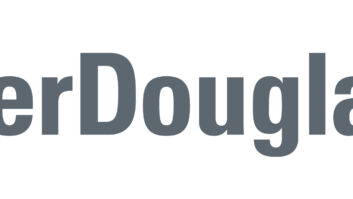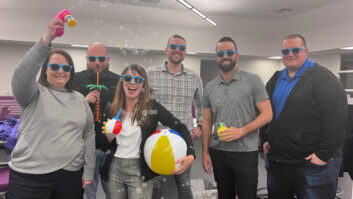The eventual success of high-definition television rides on the country’s conversion to digital TV. Last December, when Congress voted to set Feb. 17, 2009, as the hard date for turning off analog TV broadcasts and completing the switch to DTV in the United States, it set a finish line for the long slog that has been the digital transition. But local broadcasters, network executives and Beltway insiders all say the home stretch of this marathon will be a steep climb.
Since most digital sets sold now and in the future will be capable of providing HDTV, the analog-to-digital conversion is vital to the adoption of HD. And that in turn is vital to the economic viability of HD programming, which right now is growing but still a novelty. For example, all-HD cable networks generally don’t get audiences large enough to be measured by Nielsen.
Most large broadcasting groups are confident that they will make the analog-to-digital deadline, but some smaller stations remain a question mark. Regardless of size and capacity, it’ll be a fight for everybody, with every legal or commission decision or deadline facing a host of technical roadblocks. And if too many stations are not ready to pull the plug in February 2009, look for legislators to move the finish line rather than face the wrath of constituents, particularly if consumer-friendly Democrats are still in charge.
For many, the first problem is one of real estate. At present, more than 500 stations — roughly 28 percent of the country’s broadcasters — are switching from their current DTV channels and returning to their original NTSC channel assignments as part of the FCC’s “channel-election” process, according to spectrum-watchdog group Association for Maximum Service Television (MSTV).
Another 100 stations are waiting for new DTV assignments, most because both their analog and their digital channels fall “out of core,” or outside of channels 2-51. UHF channels higher than 51 are being auctioned off to new users by the FCC.
“You’re looking at a reasonable chunk of the industry that is going to have to move,” said MSTV president David Donovan.
The conversion, say engineers, will not be as easy as flipping a switch. Analog antennas at the top of a tower might need to be traded out for digital models, and transmitters and transmission lines may need to be changed. In cities where multiple stations broadcast from a single tower, that will require cooperation among local broadcasters.
That’s hardly the only tower-related issue, especially for CBS. The broadcaster’s owned-and-operated stations in both New York and Los Angeles have analog channel 2 assignments that they can’t use for DTV, because of cable-interference issues, and out-of-core DTV assignments they will be giving up come that February day in ’09.
And crowded urban transmission facilities, like the Empire State Building in New York, don’t have the room to accommodate new equipment for the digital channels that will go live then. So broadcasters are looking for FCC guidance to help smooth the transition. “You don’t just put up a third antenna on towers,” said CBS advanced technology VP Bob Seidel.
Cox Broadcasting also faces some tough issues, particularly in the San Francisco market, where KTVU Oakland, Calif., is currently broadcasting on channel 56 but will be moving to channel 44 for its DTV assignment (its current analog home is channel 2, with cable-interference issues). But in the law-and-disorderly reality of this switch, channel 44 is currently occupied by an analog station, CBS owned-and-operated KBHK.
“How do we do this in the blink of eye?” asked Cox Broadcasting engineering VP Sterling Davis.
KTVU currently broadcasts off Sutro Tower, a communal tower that supports multiple Bay Area stations. The tower company has built one DTV antenna as an interim solution — an antenna that wasn’t designed to accept Channel 44.
“The plan is to clean off all the analog antennas on top of the tower and build new digital ones after the shut-off date,” said Davis. “That’s the antenna part. But that doesn’t solve the issue about KTVU being on Channel 44 and one analog getting wiped off the top of the tower. Where does that station go temporarily?
“This is business clashing with reality and physics,” he added. “There’s going to be a lot of herky-jerkiness going on. This is just one small example.”
The amount of tower work needed nationwide may be too much for the limited number of crews available, say some broadcasters. There are also questions over the manufacturing capacity of transmission vendors.
In northern climates, there are only two summers left to perform the necessary tower work before the winter of 2008-2009 sets in.
Cox’s situation at WSB Atlanta is easy by comparison. Since that station is giving up its analog channel 2 and sticking with its digital assignment on 39, it can take the time to swap out the analog antenna at the top of its tower while continuing to broadcast from a side-mounted DTV antenna. Once a new digital antenna is in place on top of the tower, WSB will switch from the side-mount, perhaps leaving it up as a backup.
Dave Converse, engineering VP for the ABC station group, expects the switch to be fairly smooth because ABC owns the facilities and therefore controls all the pieces of the puzzle. Nine of ABC’s 10 stations have elected to return to their old NTSC assignments in the VHF band (2-13 for DTV) and the network’s Fresno, Calif., station will move from a DTV assignment on VHF channel 9 to its old analog assignment, channel 30, in that UHF-dominated market.
The older analog antennas and transmission lines used for years may need maintenance to support DTV, but Converse is optimistic: “I don’t think I have any situation where I [can’t] run a digital facility on analog with a very short outage.”
Davis says Cox is committed to meeting the FCC deadline and will “figure out a way to do it.” But from a national perspective, he isn’t sure all broadcasters will do the same.
“It’s a volume thing,” he explained. “How many of these things can you do? How many towers can you work on? For bigger station groups like Cox, they’re doing their homework, and they’ll pay the bucks.”
But Davis fears that some smaller stations won’t be able to afford a similar approach. “It’s going to be a mess,” he said, adding that the FCC may have to issue some temporary rules to help stations make it through the transition.
Scripps Howard has three stations currently broadcasting DTV on an out-of-core channel, and they will be moving to a currently occupied in-core channel, said Scripps engineering VP Michael Doback.
“There are problems logistically,” he said. “If you are assigned an in-core channel that is being used by a third party, it’s virtually impossible to turn them off and turn you on Feb. 17. Sometimes you have to take down facilities, and there is red tape associated with that. The regulatory requirement could be onerous if the FCC doesn’t expedite things like moving antennas from the side to the top.”
Doback is banking on the FCC’s relaxing its criteria for tower changes to allow such upgrades to be quickly performed with a modicum of paperwork.
Even if the commission grants his wish, he doesn’t expect channel-switching to be easy: “It’s still going to be a big deal, and there is a lot of work to be done by a lot of groups.”
It might make sense, Doback added, for out-of-core DTV broadcasters to continue operations on their current channels until they remove old analog antennas and ready their digital facilities for their new channels. But with the out-of-core frequencies scheduled for federal auction, it is unclear whether broadcasters would be allowed to do that.
“A lot of people underestimated how difficult this is,” he said. “It’s a dance.”













